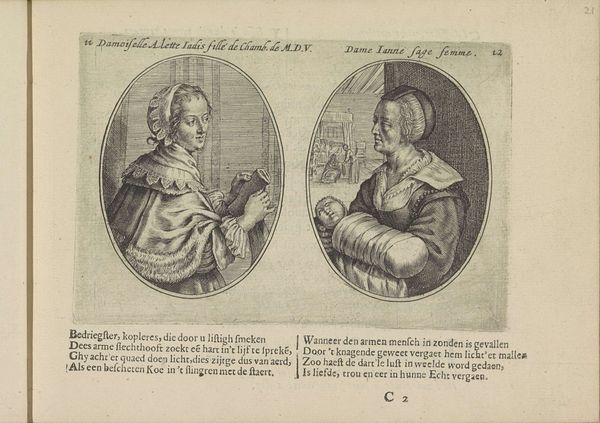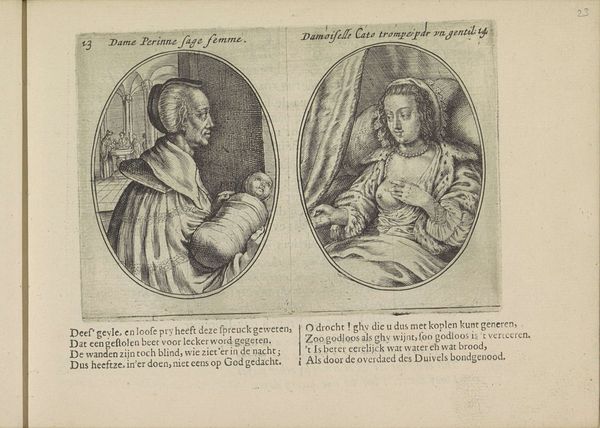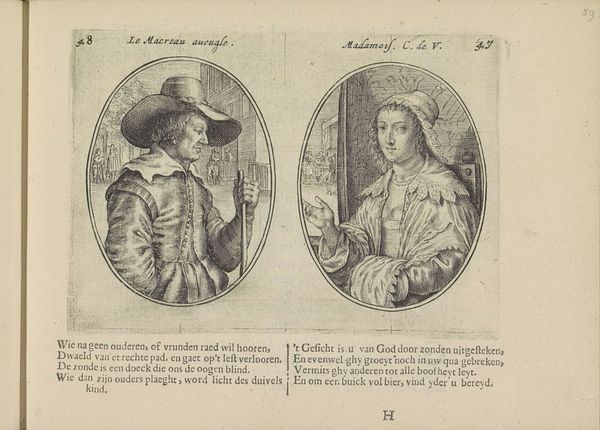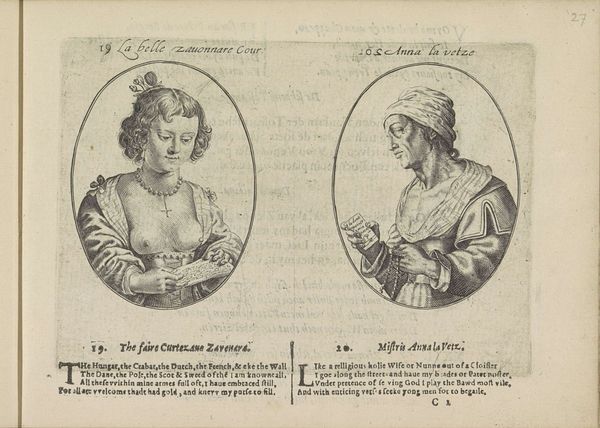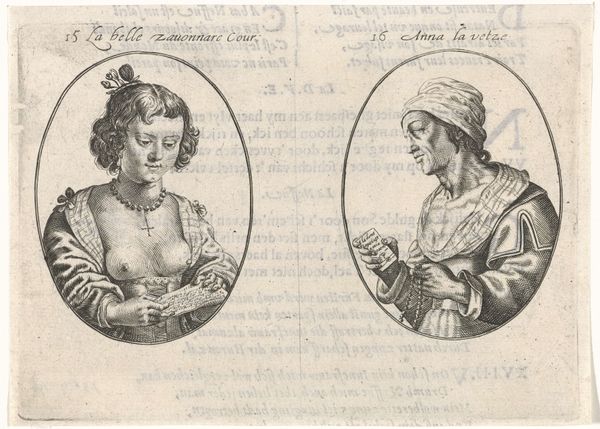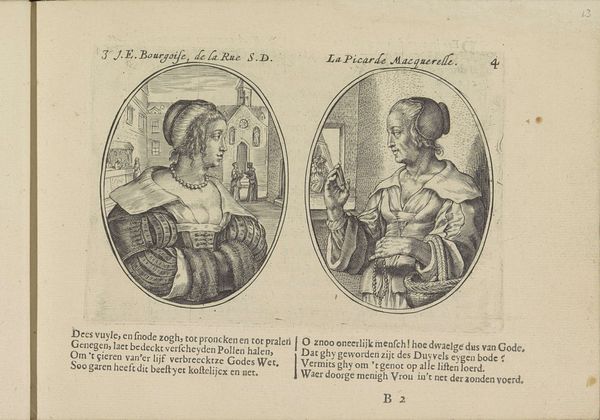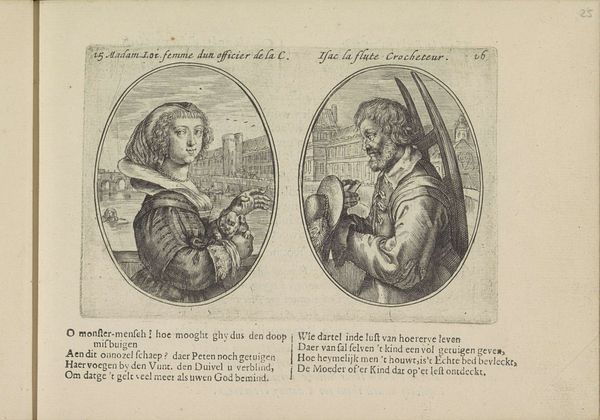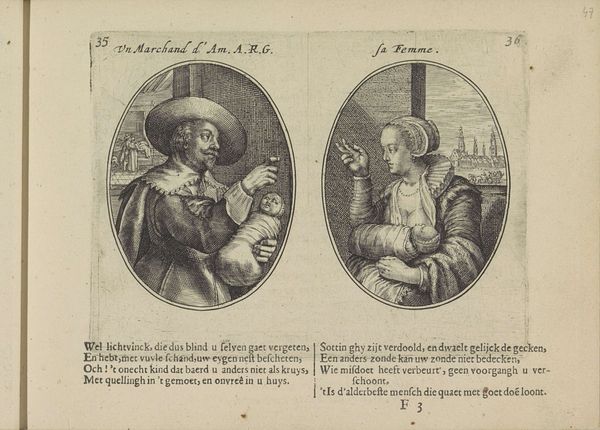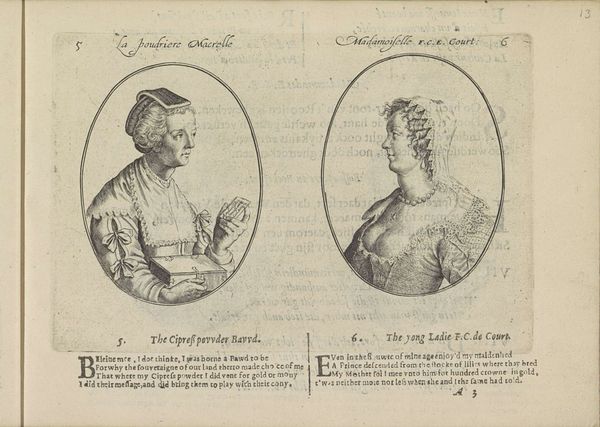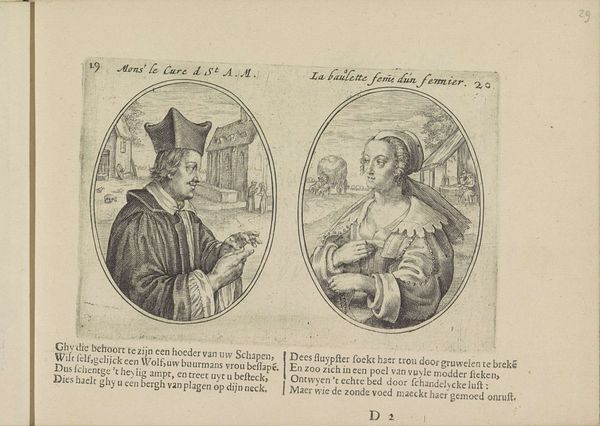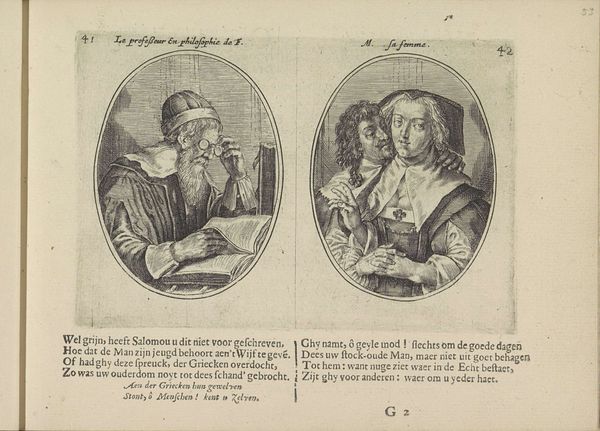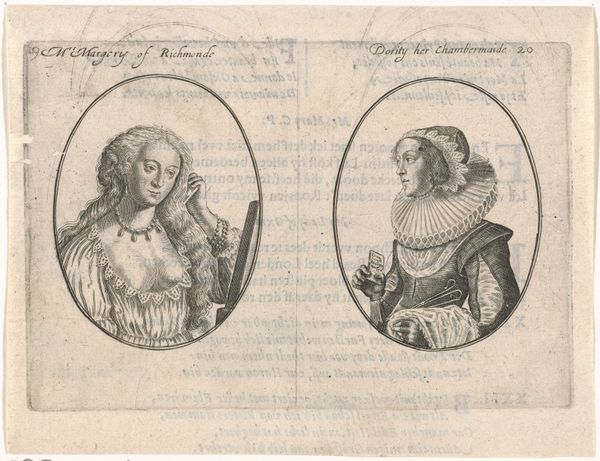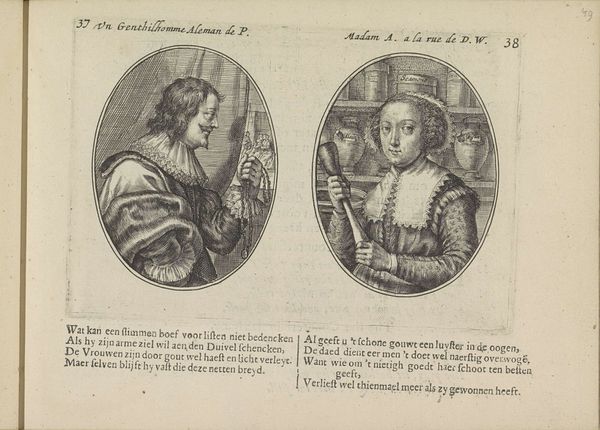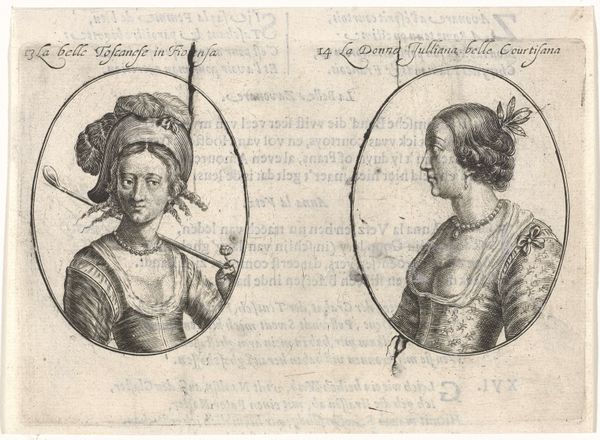
drawing, print, paper, ink, engraving
#
portrait
#
drawing
#
baroque
# print
#
old engraving style
#
paper
#
ink
#
genre-painting
#
engraving
Dimensions: height 93 mm, width 142 mm
Copyright: Rijks Museum: Open Domain
Curator: Here we have an engraving titled "Stijfster en kamenierster," which translates to "Laundress and Chambermaid," created by Crispijn van de Passe II in 1641. It's part of the Rijksmuseum's collection. Editor: My first thought is that the contrast here is sharp; there is a very definite and, may I say, quite opinionated, line quality. It feels…satirical. Curator: Absolutely. Van de Passe, like many artists of the Baroque era, often embedded social commentary within his genre scenes and portraits. The choice of an engraving allowed for multiple reproductions, making this kind of critique accessible to a wider audience. Editor: Look at the laundress on the left. Her bodice is... generous, shall we say. She is almost spilling over into the domestic space, where the chambermaid looks very controlled and…knowing, isn’t she? Like she has seen something, or many things. There’s almost a warning in her gaze. Curator: Indeed. It is a common theme in art history, specifically that female domestic work in the 17th century, such as washing or housekeeping, often signified moral compromises or was linked to seduction and other "base instincts" by a patriarchal elite. Her direct gaze perhaps invites the viewer to consider their own moral stance. It speaks to broader concerns about female virtue, particularly in relation to labor and class distinctions of that time. Editor: The inclusion of the Dutch verses reinforces that message. It seems this wasn't just a benign snapshot of everyday life; there's a judgmental narrative woven in with the visual depiction. “The women are often prone to talk…” the text complains! It certainly leaves you wondering about the experiences and societal pressures these women faced. What a story embedded in this ink and paper. Curator: I find that by looking at an image from the Baroque period we're forced to look not just at aesthetics but at what this says about women, work and status within this time, a world and society long gone that reflects to us and our values. Editor: Beautifully said.
Comments
No comments
Be the first to comment and join the conversation on the ultimate creative platform.
